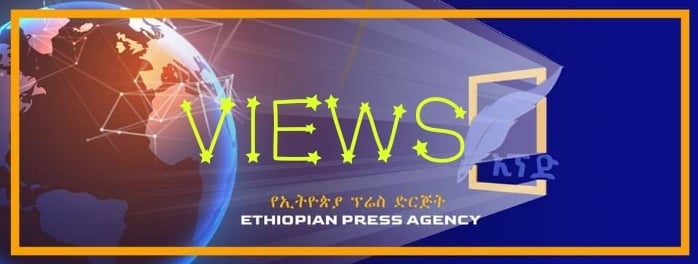
Researchers and policy analysts calculate the effects of taxes and benefits on household incomes and work incentives for the population of a given country. They use models for such analyses. For Ethiopia they employed a model, which is updated to fit recent policy schemes using national household survey data. This work was carried out by the Ethiopian Development Research Institute (EDRI) in collaboration with universities and other partners. The model is prepared by “simulating” tax and benefit policies for development, which is part of the economics and politics of taxation and social protection.
The organization level of the tax system in Ethiopia depends on the nature of the tax. It is pointed out by T. Andualem et al the payroll tax, self-employment tax, and tax on the profits of sole proprietor businesses are collected at the “regional” level. Although regions have the legal competence to structure the tax rate for the aforementioned taxes, it has always been the case that the “same” rates apply in all regions. Other than the tax types mentioned above, the tax rates of all other taxes are set at the federal level and the revenue for all these other taxes, including payroll tax on federal employees, is collected at the national level, and part of the proceeds is then “distributed” to regions.
Benefits that are part of the social security system are within the competence of the federal government. These benefits are related to pension, sickness and disability. Other benefit systems, such as the Productive Safety Net Program (PSNP), are the responsibility of the regions. Although administered by regions, the amount of benefits and the criteria for qualification for PSNP are similar across regions. For budgetary reasons, main benefit changes usually take place at the beginning of the fiscal year. The official state pension age is 60 years for both genders. This applies to employees of private organizations and public servants other than the military and police force.
For the military and the police, the retirement age is determined based on the respective legislation regulating the administration of the defense and police forces. For civil service, the proclamation sets three types of provisions based on a combination of age and number of service years. First, anyone who has served a minimum of 10 years and reached the age of 60 years is entitled to lifetime retirement pension benefit. Second, employees who have served for a minimum of 25 years can retire at the age of 55 years and receive lifetime pension benefit.
Employees who have served 20 years are entitled to retire and start receiving pension benefit when they reach 60 years of age. Finally, if an employee reaches the retirement age of 60 years before completing the 10 years of service required for entitlement of pension benefit, s/he shall be entitled to receive a lumpsum retirement “gratuity.” There are no benefits based on family composition, such as the presence of dependent children or a lone parent.
Income tax system: The income tax system is an individual system, whereby individuals are assessed independently. Employment income tax rates are progressive. Employment income includes any gains in cash or kind from employment by individuals. “Exceptions” from employment income tax include casual workers who do not work for more than 1 month in a year for one employer. Also, pension contribution by the employer, and people employed in embassies are exempted. Different income sources are taxed differently. For instance, income from interest on deposits is taxed at the rate of 5 per cent, income from dividend is taxed at the rate of 10 per cent, income derived from rental of property is taxed at the rate of 15 per cent, and income from royalties is taxed at the rate of 5 per cent.
As T. Andualem et al pointed out the employment income tax liability is assessed on a monthly basis and employees whose tax is withheld by their employer need not fill a tax return at the end of the fiscal year. All others, whose income is derived from self-employment, rental of property, and so on, need to fill in a tax return annually as their tax liability is assessed on an annual basis. None of the tax brackets and none of the benefits, with the exception of the productive safety net program, PSNP, are indexed to inflation.
The amount of benefit, for both conditional and unconditional recipients, PSNP is adjusted to the food inflation rate in the closest market in which the recipient is located. Entitlement to PSNP benefits is based on the poverty status of the household, which is assessed by a community committee. The assessment is verified using a proxy means test (PMT). Finally, household members can decide to exclude themselves from the program even if they qualify for the support.
Social benefits: A contributory social security system in Ethiopia started in the early 1960s. The current proclamation governing the social security system establishes the public servants’ pension funds. Although there was no coverage for private sector employees until 2011, these employees are currently covered under the Private Sector Employees’ Pension Fund (PSEPF) proclamation. This proclamation provides private sector employees with the same benefit structure as civil servants. Recently, the Ethiopian government introduced an amendment for the inclusion of temporary government employees, employed for not less than 45 days, under the public employees’ pension scheme.
The amendment defines a public servant as a “monthly salaried person employed permanently or for definite period or piece of work in a public office, public enterprise or project or program carried out by government.” In accordance with the proclamation, the amount of retirement pension for a public servant is set at 30 per cent of the average salary for the last three years before retirement. For each additional year of service above the required 10 years of service, the retirement pension is increased by 1.25 per cent for a public servant and 1.65 per cent for members of the defense and police forces.
Public servants are provided with an invalidity pension payment (of similar amount to normal pension) for life. This applied to a public servant if s/he leaves service after 10 years of service but before the retirement age owing to health problems that prevent him/her from any other gainful employment. On the other hand, if a public servant leaves service before completing 10 years of service owing to health-related problems that prevent him/her from any other gainful employment, s/he is entitled to a lump sum “invalidity gratuity” payment. Similarly, public servants who leave service following employment injury (i.e. injury at the workplace) of not less than 10 per cent are entitled to incapacity pension and gratuity payments.
Other benefits are survivors’ pension and sick leave payments. If a public servant dies because of employment injury or while receiving pension payments or upon completing 10 years of service, his/her survivors are entitled to pension payments. Specifically, a widow or widower is entitled to 50 per cent of the pension the deceased was or would have been entitled to. A surviving child below the age of 18 years is entitled to 20 per cent of the pension. Similarly, each parent of the deceased public servant is entitled to 15 per cent of the pension. In any 12-month period, civil servants are entitled to a maximum sick leave period of six months, conditional on presenting a medical certificate. Pension benefits received, contributions collected, and profits earned from investment of pension funds are all “exempt” from taxes.
Retirement pension payments for government officials and members of parliament as well as payments for retirement gratuity are all stipulated by a proclamation. It stipulates that a civil servant is entitled to 100 per cent of his/her salary for the first month and 50 per cent of his/her wage in the next two months of the sick leave period. Out of the total six-month period, the civil servant is entitled to take the remaining three months of sick leave “without” pay. A proclamation also grants a female civil servant a paid leave period of 30 consecutive days before the due date of birth and a period of 60 consecutive days of paid leave after the birth of the child.
As T. Andualem et al revealed the civil servants are granted medical benefits and paid leave periods if they happen to sustain workplace-related injury. If a civil servant happens to sustain an employment injury, the government institution (as employer) is required to cover medical expenses incurred in relation to the employment injury. Besides, the civil servant is entitled to paid injury leave until s/he recovers and is able to resume work.
Transfer payments and PSNP: Although Ethiopia has several non-contributory benefit schemes provided by NGOs, most are of a smaller scale. A social protection transfer payments program of interest is the PSNP, a government safety net program established in 2005 through multi-donor financing. The main objective of the program is to help “chronically” food-insecure rural households develop their capacity to resist shocks, create assets, and become food self-sufficient. To this end, the program offers “transfers” in the form of food, cash, or a combination of both to chronically food-insecure rural households. They are employed in local public works projects through direct support.
Households with able-bodied members participate under the public works component and receive cash (food) transfers “conditional” on supply of labor to public works aimed at building community assets. On the other hand, households “without” able-bodied members are covered under the direct support component and receive unconditional cash (food) transfers. They are not required to supply any labor. The PSNP in Ethiopia is also the second-largest safety net program in Sub-Saharan Africa, next only to the one in South Africa. The program started with coverage of 4.84 million food-insecure rural households, and it has been scaled up significantly to cover several million households (MOA). The program covers rural households in the eight major regions of the country.
Conclusion: Tax revenues are used to finance economic development and social benefits. These benefits are related to pension, sickness and disability. Other benefit systems, such as the PSNP, are also used to support those who are “chronically” food-insecure households to resist shocks, create assets, and become “food self-sufficient.” Beneficiaries of the PSNP are households that live in chronically food-insecure areas as defined by the government. It has developed eligibility criteria for participation in the program. Such endeavor by the concerned agencies is commendable as it enables the chronically food insecure Ethiopians to survive, endure and continue to subsist as proud citizens of the country. Of course, tax payers should also share the credit for that.
Editor’s Note: The views entertained in this article do not necessarily reflect the stance of The Ethiopian Herald
BY GETACHEW MINAS
The Ethiopian Herald August 2021



